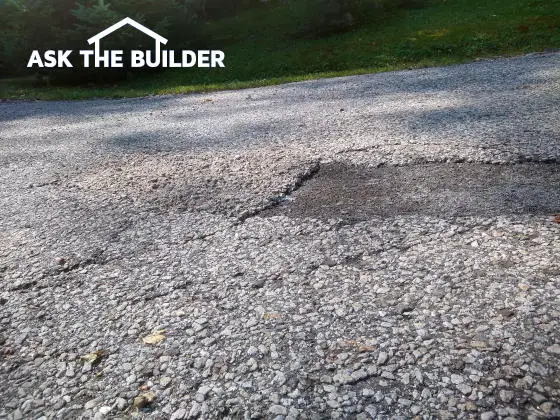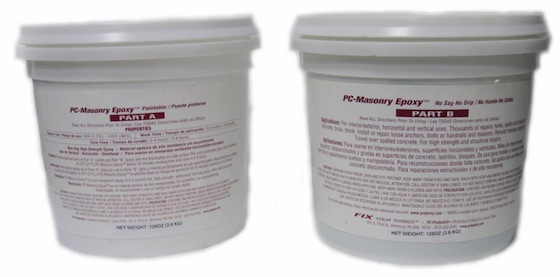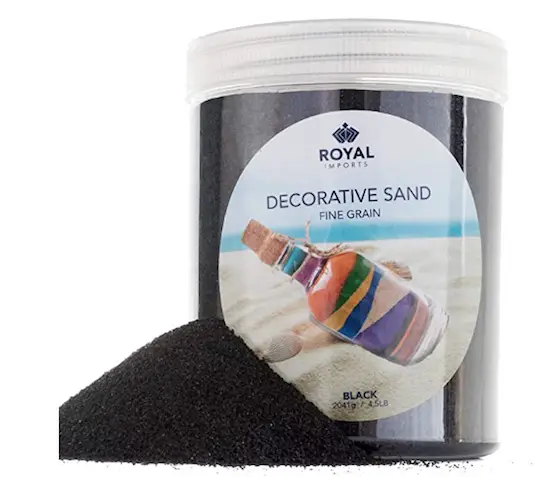Fill Driveway Holes

Fill Driveway Holes | Can you believe how the blacktop patch to the left is almost a perfect match? The blacktop defect was too shallow to fill with a normal patching compound. Copyright 2020 Tim Carter
Fill Driveway Holes - Use Exterior Epoxy, Stones & Sand
QUESTION: Tim, I read a previous column of yours where you talked about how to fill driveway holes in a concrete surface using sand and Portland cement. You talked about installing concrete overlay. My issue is I have a few shallow puddles in my blacktop driveway and I know this ponding water will eventually create a far more serious issue. The normal patching products sold in bags will not work as the depression is too shallow. I tried using it once and it all peeled up. How do you recommend creating a patch that stays put and matches as closely as possible the rest of the blacktop? I’m 78 years old and quite sure I can follow your directions. Katie D., Laurel, MD
You may have the same problem as Katie. I know I do! There are three places in my blacktop driveway that have sunken. I didn’t build the house I currently live in. One of the areas is where the underground electric and cable TV wire passes under the drive. I’m quite sure the contractor didn’t compact the fill in the trench and/or he used the wrong material.
Two other locations are probably poor fill as well. Two years ago, I removed all the crumbling blacktop in one of these areas and did fill it with 1.5 inches of the cold-patch blacktop that Katie tried with no success. I’ve since had a little more settlement in this area and quite a bit of the cold patch has eroded. In other words, my driveway is the poster child for the problem that Katie and you might be facing.
Why Is Epoxy a Great Thing to Fill Driveway Holes?
Several years ago, I became aware of a fantastic exterior epoxy that’s made to repair concrete and asphalt defects. It can also be used to fill cracks larger than 3/8 inch in concrete slabs. I’ve tested it in my harsh New Hampshire climate and it’s unfazed by bitter cold temperatures. It’s also performed well when the sun has raised the temperature of the blacktop so high you can’t walk on it with bare feet. In other words, this epoxy is worthy of your attention.
CLICK or TAP HERE to get FREE QUOTES from local handymen that can do this repair for you.
If you were to just use the epoxy to fill driveway holes, you’d end up with a medium-gray monolithic patch. That’s the color you get when you blend the white epoxy component with the black component. Your blacktop, if it’s like mine, is actually a mosaic of different stones, sand, and the black asphalt cement you see holding the stones and sand together. I decided it was really easy to match this look with a minimal amount of effort.

This is the EXACT epoxy I used for my driveway repair. It's going to be there for years. CLICK on the IMAGE to order some now.
Why Should I Read the Epoxy Instructions?
The first step in the process is to stop and read the instructions on the label of the epoxy. Pay attention to the temperature range when you can install it. I decided to wait until the daytime temperatures were in the mid-70s F and I worked in the shade.
How Thick is the Epoxy?
The epoxy components have the consistency of very thick peanut butter. I used a stiff bent 3-inch scraping tool to blend them together on a large thin piece of plywood. I discovered wide side-to-side strokes did an excellent job of thoroughly mixing the epoxy. Don’t try to scoop and turn it over in a large pile as it’s just too sticky to do this.
Where Do I Get the Stones and Sand?
It’s important to realize that before I even unpacked the epoxy, I gathered up some stones and sand from the edges of my driveway. These things used to be part of my blacktop. Each winter the NH ice plucks some from my drive. If you don’t have any stones and sand, just take a closeup photo of your blacktop and go to a nearby gravel pit to get matching stones. Trust me, you’ll never regret taking the time to do this.

This is great sand to use to sprinkle between the stones. It will simulate the asphalt cement in your actual blacktop. CLICK on the IMAGE now to order it.
How Thin Can the Epoxy Be?
What I love about this epoxy-repair method is the epoxy can be feathered to just 1/16th-inch thickness. This allows you to make a repair that absolutely gets rid of any puddling. In my case, the thickest part of my depression was about 5/8-inch.
What Prep Work is Required?
To achieve a permanent bond, you must get rid of any dust from the blacktop as well as any other loose stones. I employed my hand-held leaf blower, garden hose, and a push broom to do this. I basically washed and rinsed the blacktop and allowed it to thoroughly dry.
I mixed up equal amounts of the epoxy ending up with about a half-gallon of material. Using the scraper, I transferred the sticky goo from the plywood to the center of the depression and worked my way to the edges. I was careful to not put the epoxy outside of the depression. I also made sure the epoxy was about 1/4 inch lower than the other flat portions of the blacktop outside of the depression. The stones and sand would be used to make up the difference.
The epoxy I used has a very long open time. You have plenty of time to work with it after mixing. Looking at the mosaic of stones in my existing blacktop, I started to place larger stones in a random pattern throughout the epoxy. I then scattered smaller pebbles around the larger stones. I was careful to use the smallest pebbles at the edge of the patch.
Do You Compact the Stones and Sand?
After all the stones were placed, I then scattered dry sand over everything. I wanted the sand to hide the epoxy. I used a scrap piece of 2x4 to pack the stones and sand into the epoxy and to make sure the new repair was flush with the surrounding blacktop.
I wish now I had purchased black sand, but when you view my patch from a distance only a perfectionist would complain about the light-colored sand.
I created a video for you to watch to see the epoxy I used and how I did the job. Check out the video below.
Column 1370
3 Responses to Fill Driveway Holes